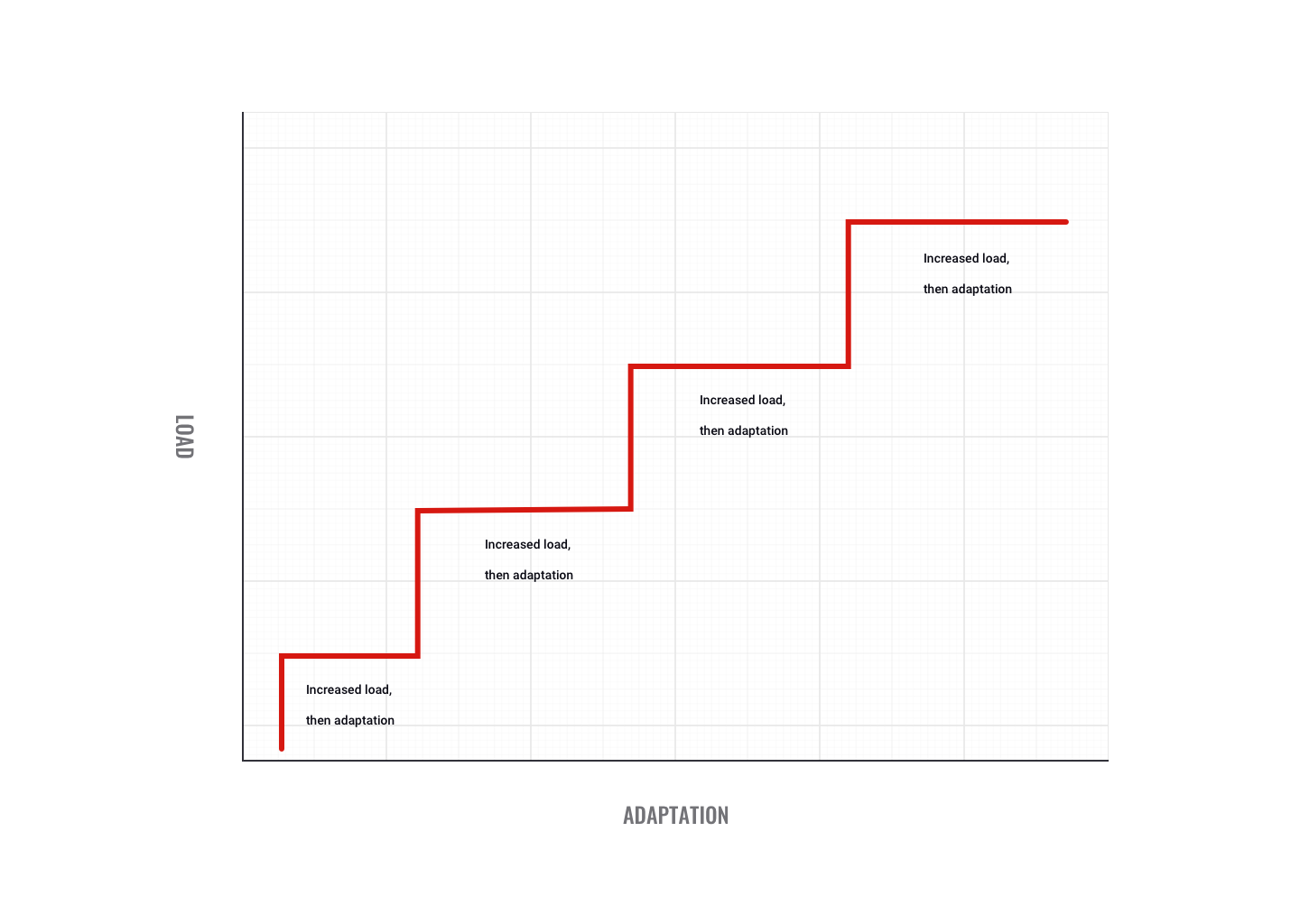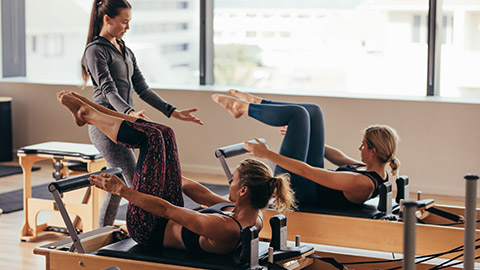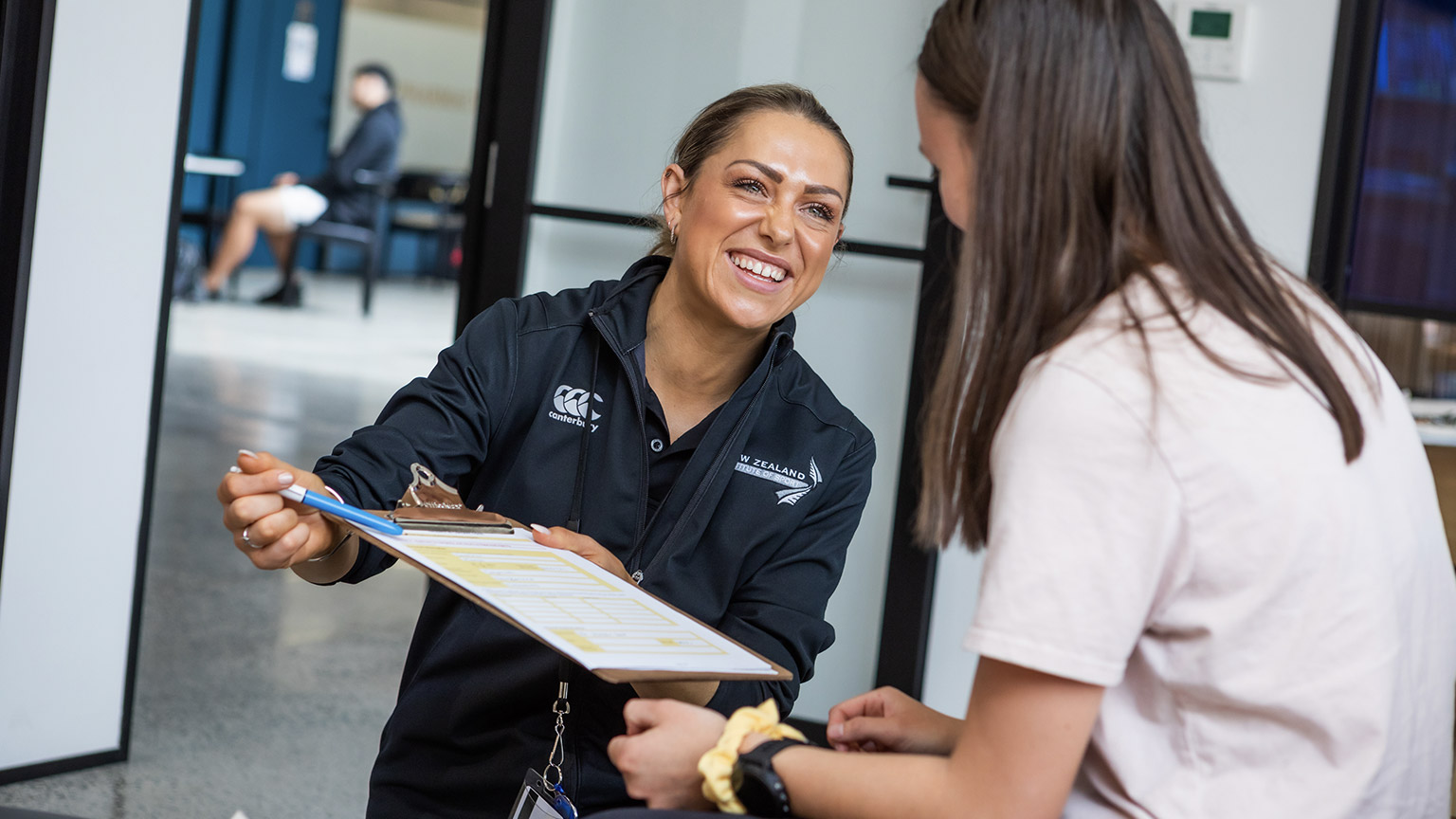You’ve learnt about client consultation and pre-screening, goal setting, testing, and exercise selection. Now it’s time to put it all together to learn how to create a programme for your clients.
Programme design is often said to be both an art and a science. It involves applying scientific principles and knowledge to create a programme that is safe, effective, and efficient for achieving specific fitness goals. However, there is also an art to designing a programme, as it requires a certain level of creativity and intuition to tailor the program to the individual's unique needs and preferences.
The science of programme design involves understanding concepts such as anatomy, physiology, and movement, as well as principles such as specificity, overload, progression, and individualisation. This scientific knowledge is essential for creating a programme based on evidence and tailored to the individual's goals and needs.
However, the art of programme design involves considering the individual's preferences, abilities, limitations, and psychological and emotional factors. A good trainer must communicate effectively, inspire and motivate clients, and adjust based on feedback.
In this topic, we’ll cover:
- Foundations, including training principles and FITT
- Creating a programme skeleton
- Modifying variables
- Resistance training
- Progress reviews
- Periodisation

When designing a programme, we need to ensure the programme is:
- Specific to the goals and aims of client
- Individualised to the client
- Sustainable and achievable for the client - have you managed the FITT principles appropriately
- Thorough, detailing all aspects including warm-up, mobility, activation, finisher, cool-down, and stretches
- Balanced (agonist/antagonist)
- Different from your competitors
- Designed in a professional way including layout
- Designed in a logical order
- Accompanied with an overall weekly training plan
You were introduced to some of these points in Exercise Prescription Part A. We’ll recap key training principles with respect to effective programme design before moving onto new concepts.
Sustainability
A trainer may prescribe the best programme in the world but if the client is not able to complete it, the programme is of no value. So how do you ensure a programme is sustainable for a client to give the best chance of programme adherence?
Before designing a programme you should:
- Know your client – goals, history, and how training will fit in with their life.
- Perform a needs analysis – compare goals, fitness assessment, and establish what is needed to get from point A to point B.
New trainers often over-prescribe and design programmes that a new client is simply not able to sustain. It’s also not appropriate or effective to try a bunch of exercises with a client to see what sticks and what happens. It's essential that you appropriately manage the FITT principles and consider 3 basic principles:
- Simplicity
- Specificity
- Progressive overload
Our bodies adapt to the physical demands placed on it, not to best intentions and wishes. A client’s success hinges on your decisions about what to work on work on, how often, and how hard (Spraul, 2021). Basically, have you used the FITT principles to create a sustainable programme that aligns with the information you discovered in the client consultation and fitness testing stages?
Simplicity
In programme design, simplicity refers to the idea of keeping the programme simple, straightforward, and easy to understand. This means avoiding overly complex exercises or workout routines that can be confusing or overwhelming for clients, especially those who are new to exercise.
Simplicity in programme design can have several benefits. Firstly, it can help to reduce the risk of injury by ensuring that clients perform exercises with proper form and technique. Simple exercises that are easy to understand and execute can be performed safely and effectively.
Secondly, simplicity can help to improve adherence to the programme. A simple and straightforward programme is easier for clients to follow and can help them to stay motivated and consistent with their workouts. If a programme is too complex or overwhelming, clients may become discouraged and give up on the programme altogether.
Finally, simplicity can help to save time and resources. By focusing on a few key exercises or movements that provide the most benefit, trainers can create a programme that is efficient and effective, without requiring a lot of time or equipment.
Specificity and individualisation
Specificity and individualisation are important principles to consider in programme design. Programmes need to be specific to the client’s goals and individualised to the client.
The principle of specificity highlights that exercise should be specific to the client's goals, needs, and capabilities, and that the results of a training programme will reflect the type of training completed.
The principle of individualisation is about tailoring the programme based on the individual themselves. Factors such as exercise experience (training age), progress, injuries, medical conditions, strengths, and weaknesses need to be at the forefront of our mind when designing a programme. E.g., we wouldn't give a beginner a multi-day split programme for their first programme.
When designing a programme, ask yourself if the programme is designed around your client’s:
- Direct goals
- In-direct goals (these are goals that you as a trainer can see is a need for your client but one that they haven't identified in the consultation, e.g., posture, poor mobility, and high stress)
- Individual capabilities
- Injuries and medical conditions
- Sport and/or activities
Progressive overload

The progressive overload principle is a basic training principle that means you need to increase the amount of stress on your body during exercise over time to continue progressing. This means gradually increasing the amount of weight you lift, the number of repetitions you perform, or the intensity and duration of your workouts. By doing this, your body adapts and becomes stronger, which allows you to continue making progress towards your fitness goals.
In simpler terms, the progressive overload principle means that to get stronger and fitter, you need to challenge your body by gradually increasing the difficulty of your workouts over time. When you are programming, manipulate the FIIT principles so that clients exercise above normal to create overload and therefore adaptations can occur. In practical terms, ensure that one of the variables (load, volume, duration, etc.) is always increasing with every iteration of training (Spraul, 2021).

Keep in mind that training must be gradual and progressive. Too much overload can lead to fatigue and injury.
FITT principles
The first considerations for programme design need to be around the FITT principles:
- Frequency: How often my client trains over the week
- Intensity: How hard I push my client
- Time: How long my client trains for
- Type: The modality or modalities of training I use for my client
A quick recap: The FITT principles are used to guide the development of exercise programmes. Here's an example of how a personal trainer might apply the FITT principles to design a programme for a client:
- Frequency: The trainer and client agree on a workout schedule of 3 sessions per week.
- Intensity: Based on the client's fitness level and goals, the trainer determines that the client should exercise at a moderate intensity (e.g., if performing cardio training with your client, aim for 70-80% of their maximum heart rate) for most of their sessions. However, the trainer may also incorporate some high-intensity interval training (HIIT) or other forms of high-intensity exercise to challenge the client and improve their cardiovascular fitness.
- Time: The trainer plans for each session to last around 30-60 minutes, depending on the client's availability and fitness level.
- Type: The trainer selects exercises appropriate for the client's fitness level, goals, and preferences. E.g., they may incorporate activities such as resistance training, circuit training, CrossFit, long slow distance, fartlek, High-Intensity Interval Training (H.I.I.T), group exercise, boxing, and hypertrophy training.
By adjusting the FITT principles based on the client's individual needs and goals, the trainer can create a programme that is effective, safe, and enjoyable for the client.
After gathering all your information about the client, completing needs analysis, and considering training principles, it’s time to put pen to paper.
Broad outline
Before jumping into specific reps, weights, and rest periods, it’s helpful to create an outline or skeleton of the programme. This outline provides a broad overview of the programme where you look at each workout in terms of the training effect you want to achieve. Once you have the outline, you can zoom in and flesh out the specifics.
Here’s an example:
| Sunday | Monday | Tuesday | Wednesday | Thursday | Friday | Saturday |
|---|---|---|---|---|---|---|
| Rest | Weights (upper body) | Cardio (spin class) | Rest | Weights (lower body) | Cardio (steady state walk) | Mobility routine |
Self-directed research
There are countless examples of how you could structure a programme. 2 NSCA resources you may wish to bookmark include:
There are also a lot of examples online, which can provide a good starting point. Just keep in mind that there are many different opinions out there, and some conflicting advice. Always check that you are using reliable sources.
Check out a few workouts across 2 or 3 categories suggested by Muscle and Strength. Articles and examples like these can provide a starting point from which you can tailor a programme to your client.
Workout type

There are several different types of workout programmes you can follow. Here's a brief explanation of some popular types.
Full body training
As the name suggests, full body training involves working all major muscle groups in a single workout session. This type of training is often recommended for beginners or those who don't have a lot of time to spend in the gym, as it allows them to get a full body workout in a shorter amount of time.
Full body workouts can be done 2-3 times per week and usually consist of compound exercises that target multiple muscle groups, such as squats, lunges, bench presses, and pull-ups.
A full body programme should not be performed on consecutive days. E.g., Do not schedule full body programmes for both Monday and Tuesday.
Split training
Split training involves working different muscle groups on different days. E.g., you might programme an upper body workout one day, and a lower body workout the next day.
This type of training is often used by more advanced lifters who want to focus on specific muscle groups and/or increase overall training volume. Split training can be done 4-6 times per week, depending on the split and recovery ability. The most common splits include:
- Upper/lower split: Alternating upper body and lower body workouts each day. This is often called a 2-day split.
- Push/pull split: Working pushing muscles (chest, shoulders, triceps) on one day and pulling muscles (back, biceps) on another day. This is sometimes called a 3-day split (push, pull, legs).
- Body part split: Targeting one to 2 muscle groups per workout, such as chest and triceps or back and biceps. This may be referred to as a multi-day split.
Cardiovascular training
Cardiovascular training, or cardio, involves exercises that increase heart rate and breathing, such as running, biking, swimming, or using a cardio machine like a treadmill or elliptical. Cardio workouts can improve cardiovascular health, endurance, and calorie burn.
Check out this brief tutorial on the different cardio zones and how to design an effective cardiovascular program for a client
High-Intensity Interval Training (HIIT)
HIIT involves short bursts of intense exercise followed by periods of rest or active recovery. HIIT workouts can be done with bodyweight exercises, weightlifting, or cardio equipment, and can help improve endurance, speed, and calorie burn in a shorter amount of time than steady-state cardio.
Watch this video on HIIT training to find out more about what HIIT training is all about, some of the benefits and explore different types of HIIT workouts.
Circuit training
Circuit training involves performing a series of exercises back-to-back with little to no rest in between. This type of training can improve strength, endurance, and calorie burn in a shorter amount of time than traditional weightlifting and can be done with bodyweight exercises or using weights.
Mobility training

In this day and age, where people are much more sedentary, you will find many clients have mobility issues. Incorporating some mobility into our clients' routines is important. A home-based mobility routine is one way to ensure our clients are working in this area. In addition to improved mobility - core strength, balance, and stress reduction are all other benefits of this type of exercise. Some examples of mobility training include:
- Yoga is a form of exercise focusing on stretching, breathing, and meditation. It can improve flexibility, balance, and stress reduction.
- Pilates is a form of exercise focusing on core strength, posture, and alignment. It can improve flexibility, muscle tone, and body awareness.
Ultimately, the type of workout programme you choose will depend on the client's goals, schedule, and individual preferences.
Layout
There are many different programme designs within the health and fitness industry to choose from. Big, bright, and beautiful designs to clean, tidy, and simple. Find out what works well for both you and your client and represents your brand.
If you work within a gym facility, they may ask you to use the template they have selected, or you may have free reign. Regardless of design, a well-designed programme:
- contains all the essential components.
- can be easily performed by the client or another trainer in your absence.
Give your programme a title – this keeps the document looking professional and provides structure. E.g., “Jen 2-day Split Training Programme”. Start by including essential client information so you and other trainers know whose programme it is.
You may wish to include the client’s goals to serve as a frequent reminder to keep them motivated and on track. It can also be helpful to write a workout summary. You may combine the goal into the summary. Then include a weekly summary (the programme skeleton).
Here’s what this might look like for a weight loss goal:
| Name | Megan Davis |
|---|---|
| Main goal | Increase overall strength and endurance |
| Workout type | Full body |
| Programme duration | 6 weeks |
| Days per week | 3 |
| Time per workout | 40 minutes |
| Sunday | Monday | Tuesday | Wednesday | Thursday | Friday | Saturday |
|---|---|---|---|---|---|---|
| Rest | Full body circuit | Rest | Full body circuit | Rest | Full body circuit | Light cardio |
Select and order exercises
After drafting the programme skeleton or broad outline, you want to work through the finer points including exercise selection and order.
Use your knowledge of exercise selection and training principles to appropriately select and order exercises for effectiveness and relevancy to the client’s goals. Let’s look at some general guidelines.
- Focus on the effectiveness and relevance of the exercises rather than the number of exercises. A workout consisting of vast numbers of complex exercises is not necessarily superior to a simpler workout using fundamental compound movements.
- Pay attention to scalability. Which exercises can be adjusted as the client gains strength and endurance?
- Ensure that all primary joint actions and primal movement patterns are covered.
- Prioritise large before small. Remember that compound exercises will return better bang for your buck than isolation exercises.
- Be realistic about your strengths as a trainer and avoid training clients on modes or equipment that you are not an expert in.
- Consider the workout and schedule as a whole. Think about how each exercise and session affects the others (Spraul, 2021).
Finally, ask yourself if the programme is balanced. An unbalanced programme can lead to several issues, including poor results, client boredom, postural issues, and even injury. Keeping specificity in mind, it is really important to ensure that a client's routine is balanced and any weight training programme ensures muscle group balance. Think about:
- Cardio vs weights
- Upper body vs lower body
- Agonist vs antagonist
- Free weights vs machines
- Barbells vs dumbbells
- Closed chain vs open chain
- HIIT vs Low Intensity Steady State (LISS)
An example would be if a client just trained their chest and did nothing for their upper back (antagonist), they would develop a kyphotic (rounded back) posture which can create chronic injuries in the future.
Watch
Have a look at this short tutorial when Ben talks through the layout for a basic program for a client.

Weights training exercises fall into 2 categories. They can be compound or isolation.
Compound
Compound exercises involve multiple muscle groups and joints working together to perform the movement. These exercises are known for their effectiveness in building strength and increasing muscle mass, as they allow you to lift heavier weights, recruit more muscle fibres, and progress faster.
They are great for overall muscle development, strength and size, and form good foundations for training. Less strain is put on specific areas of the body because you’re engaging more muscles and joints.
Some examples of compound exercises include:
- Squats: targets the lower body, primarily the quadriceps, hamstrings, and glutes.
- Deadlifts: targets the back, hamstrings, glutes, quads, and grip strength.
- Bench press: targets the chest, shoulders, and triceps.
- Pull-ups: targets the back, biceps, and forearms.
What other compound exercises do you know?
It can be easy to forget that compound exercises are working multiple muscle groups at the same time. Take note of which muscles are being worked, including fixators and synergists, to make sure you aren’t overworking stabilising muscles.
Isolation
Isolation exercises, on the other hand, target a single muscle group and involve only one joint. These exercises are useful for developing specific muscles or correcting muscle imbalances. A seated position is preferable to ensure the movement is truly isolated.
Some examples of isolation exercises include:
- Bicep curls: targets the biceps.
- Leg curls: targets the hamstrings.
- Tricep extensions: targets the triceps.
- Lateral raises: targets the shoulders.
Pin-loaded cables and free weights help reduce the risk of injury caused by pattern overload in isolation exercises. Programme variety to avoid only training certain muscles.
Can you name the joint action in these isolation exercises?
Benefits
Both compound and isolation exercises have their benefits and should be included in a well-rounded strength training program. Compound exercises are great for building overall strength and muscle mass, while isolation exercises can help to target specific muscles and correct imbalances. Consider the client’s goals and always design programmes with respect to the principles of specificity and individualisation (Quinn, 2022 and Laker, 2017).
Compound or isolation?
Watch
The following video explains the pros and cons of compound and isolation exercises in a resistance training programme and how to use them to help achieve client goals in strength and performance.
Scenario: Movement in a programme
Here’s a programme that includes a variety exercises. Can you identify the compound and isolation exercises?
Weights - lower
Warm-up: Cycle 15 Calories
Stretches: Dynamic Stretches (Lunge Hug, Side Squats, Walk the dog)
Activation: Glute Bridge with abduction x 10 reps
Potentiation: 10 reps of BB squat with just bar
| Exercise | Rest | Set 1 | Set 2 | Set 3 | Load | Notes |
|---|---|---|---|---|---|---|
| Barbell back squat | 90s | 10 35kg |
8 40kg |
6 45kg |
Hinge through hips | |
| Bulgarian split squat | 60s | 10 7kg |
10 7kg |
Drive through heels | ||
| Leg press | 10 83kg |
10 83kg |
Soft lock 15kg per side |
|||
| Dumbbell Romanian Dead Lift | 60s | 10 12kg |
10 12kg |
10 12kg |
Keep back flat | |
| Jump squats | 30s | 30s | 30s | 30s | As much height as possible | |
| Dead hang | 40s | 40s | Brace core, feet forward | |||
| Weighted plank | 40s 5kg |
40s 5kg |
Stay square |
Weights - Upper
Warm-up: Rower 500m
Stretches: Dynamic stretches (thread the needle, cat/cow, back pats)
| Exercise | Rest | Set 1 | Set 2 | Set 3 | Load | Notes |
|---|---|---|---|---|---|---|
| Barbell benchpress | 90s | 6-10 | 6-10 | 20kg | Full ROM | |
| Dumbbell flyes | 12 | 12 | 5kg | Big hug | ||
| Inverted row | 60s | 8 | 8 | Elbows close | ||
| Upright row | 8-10 | 8-10 | 15kg | Lead with elbows | ||
| Curl'n'press | 60s | 10 | 10 | 4kg | Twist through ROM | |
| Dumbbell kicks | 10 | 10 | 3kg | Elbows high | ||
| Medicine ball crunch | 60s | 10/10 | 10/10 | 3kg | Eyes on ceiling | |
| Medicine ball Russian twist | 10 | 10 | 3kg | 45 only | ||
| Medicine ball leg raises | 10 | 10 | 3kg | Shins to ball |
Programme Notes:
This programme is a progression from the full body programme you have been following. It will allow you to dedicate a bit more focus and energy to individual areas.
Ensure you stretch in between sets. Aim to increase the load as you get more accustomed to the movements.
We will change this programme in another 6-weeks' time.

All the bones and muscles in the body are connected in a chain. This chain can be referred to as the kinetic chain. Movements we make, are part of this kinetic chain and can be classified as either open or closed.
Open-chain
Open kinetic chain exercises are exercises where the hands or feet (distal points) are free to move during the movement. These exercises tend to by isolation exercises, isolating a single muscle group or joint. Examples include:
- Leg extensions/leg curls
- Bench press
- Overhead press
- Leg press
- Lat pulldown
Closed-chain
Closed kinetic chain exercises are exercises where the hands or feet are fixed and cannot move during the movement. Generally, it’s the central core (proximal segments) that move. Closed-chain exercises work multiple muscles and joints at the same time, so these are compound exercises. Examples include:
- Squats
- Lunges
- Push-ups
- Pull-ups
Closed-chain exercises are safer for joints because the distal end of the limb is in a constant, fixed position, usually on the ground. This emphasises joint compression and stabilises the joint. A programme that uses a variety of movements and exercises will achieve the best results, but closed-chain exercises should comprise the bulk of the workout (Kennedy, 2018).
Scenario: Movement in a programme
Let’s look at the 2-day split training programme again. This time can you identify the open and closed kinetic chain exercises?
Weights - lower
Warm-up: Cycle 15 Calories
Stretches: Dynamic Stretches (Lunge Hug, Side Squats, Walk the dog)
Activation: Glute Bridge with abduction x 10 reps
Potentiation: 10 reps of BB squat with just bar
| Exercise | Rest | Set 1 | Set 2 | Set 3 | Load | Notes |
|---|---|---|---|---|---|---|
| Barbell back squat | 90s | 10 35kg |
8 40kg |
6 45kg |
Hinge through hips | |
| Bulgarian split squat | 60s | 10 7kg |
10 7kg |
Drive through heels | ||
| Leg press | 10 83kg |
10 83kg |
Soft lock 15kg per side |
|||
| Dumbbell Romanian Dead Lift | 60s | 10 12kg |
10 12kg |
10 12kg |
Keep back flat | |
| Jump squats | 30s | 30s | 30s | 30s | As much height as possible | |
| Dead hang | 40s | 40s | Brace core, feet forward | |||
| Weighted plank | 40s 5kg |
40s 5kg |
Stay square |
Weights - Upper
Warm-up: Rower 500m
Stretches: Dynamic stretches (thread the needle, cat/cow, back pats)
| Exercise | Rest | Set 1 | Set 2 | Set 3 | Load | Notes |
|---|---|---|---|---|---|---|
| Barbell benchpress | 90s | 6-10 | 6-10 | 20kg | Full ROM | |
| Dumbbell flyes | 12 | 12 | 5kg | Big hug | ||
| Inverted row | 60s | 8 | 8 | Elbows close | ||
| Upright row | 8-10 | 8-10 | 15kg | Lead with elbows | ||
| Curl'n'press | 60s | 10 | 10 | 4kg | Twist through ROM | |
| Dumbbell kicks | 10 | 10 | 3kg | Elbows high | ||
| Medicine ball crunch | 60s | 10/10 | 10/10 | 3kg | Eyes on ceiling | |
| Medicine ball Russian twist | 10 | 10 | 3kg | 45 only | ||
| Medicine ball leg raises | 10 | 10 | 3kg | Shins to ball |
Programme Notes:
This programme is a progression from the full body programme you have been following. It will allow you to dedicate a bit more focus and energy to individual areas.
Ensure you stretch in between sets. Aim to increase the load as you get more accustomed to the movements.
We will change this programme in another 6-weeks' time.
The rule of thumb for exercise order is to ensure large muscle groups are worked before small muscle groups. This means programming compound exercises before isolated exercises. This is the rule for most programme designs for general population but may need modification in instances such as rehabilitation or bodybuilding.
Why train large before small
Safety is key! Compound exercises involve multiple muscle groups, which play a big part in the actual performance of the movement. For safety, these muscles should not be fatigued before lifting heavy weights or performing more complex movement patterns.
Compound exercises also mimic primal movements performed within functional, day-to-day activities. E.g., an item isn’t simply lifted by only the triceps, so let's train all the muscles used in an action to better increase the action's performance. On the flipside, if the triceps were an area of concern that needed to be focused on, this could be done via isolated and compound exercises.
The theory behind compound before isolated exercises is that it helps to prevent fatigue of the agonists (prime movers) before asking them to perform their work. Should these muscles be fatigued, they will then be less able to perform optimally. This places more responsibility on the smaller, more stabilising muscles (antagonists, synergists, and fixators). This is risky as their role is to support and ensure a smooth performance of the movement. They are not there to perform the movement themselves.
Imagine a client has a 100kg squat to perform as part of their routine. They can comfortably perform 8 reps and 3 sets of this exercise. They also have a 20 min run on a treadmill, lat pull downs, push ups, bent over rows, and calf raises to do within their routine. With this exercise plan in mind, it would be a scary idea if the client was expected to do the near-max performance of 100kg squats towards the end of their programme. Imagine how fatigued the muscles in their lower body would be and how risky that movement could be.
In a squat the quads, hamstrings, and glutes play the largest role in the movement. Supporting muscles include hip flexors and extensors, muscles of the core and lower back as well as hip abductors and adductors to a certain extent. Imagine a client who is fatigued in the main, large muscle groups and then embarking on performing a 100kg squat. The pressure would be on the smaller, more supportive muscles, literally! Ouch!
Benefits
Other key reasons why it is beneficial to programme compound exercises before isolation exercises include:
- They simulate real-life, functional movements.
- More time-efficient: Why work each muscle independently (unless you have to) when you can be efficient and train multiple at the same time? Less is more.
- Increases calorie burn: Muscle activation stimulates hormone release. The bigger the muscle, the larger the hormone release. This benefits both the workout itself and the calorie burn achieved as a result.
- Decreases the risk of injury when performing sports or other activities: Muscles are stronger and more capable.
- Enables work to be performed longer before muscle fatigue sets in: Large muscles fatigue slower than smaller muscles.
- Allows the build-up of strength and, therefore, the lifting of heavier weights.
Unless rehabilitation is the goal or to build up a particular muscle for competition- who wouldn’t compound before isolating?
Scenario: Large before small
Let's have a look at Bella's full-body programme again. Notice how the lower body compound movements are first, the upper body (smaller muscle groups) follow, and the programme concludes with the less taxing abdominal exercises.
Bella's programme
Warm-up: Assault bike 15 calories
Mobilisation/activation: 5 reps of the following:
- Open the gate
- Cat/cow
- Thread the needle
- Walk the dog
- Glute bridges
| Exercise | Rest | Set 1 | Set 2 | Set 3 | Load | Notes |
|---|---|---|---|---|---|---|
| Goblet squat | ss | 15 | 15 | 16kg | Lead with hips | |
| Walking lunge | ss | 12 | 12 | Back knee to floor | ||
| Powerbag hip thrust | 60s | 15 | 15 | 20kg | Squeeze at top | |
| Dumbbell bench press | ss | 8-10 | 8-10 | 7kg | Controlled movement | |
| Ring row | ss | 10 | 10 | Squeeze shoulder blades | ||
| Russian twist | ss | 10 | 10 | Touch toes |
Accountability habits:
- Average 9,000 steps per day
- At least 3 exercise sessions per week
- Aim to keep portion sizes to guidelines
You will see that this is a well-balanced programme with each of the primal patterns featuring at least once.
Try it out
Watch
How did you go? Watch this short clip where Ben explains the rationale for the order of the exercises.
